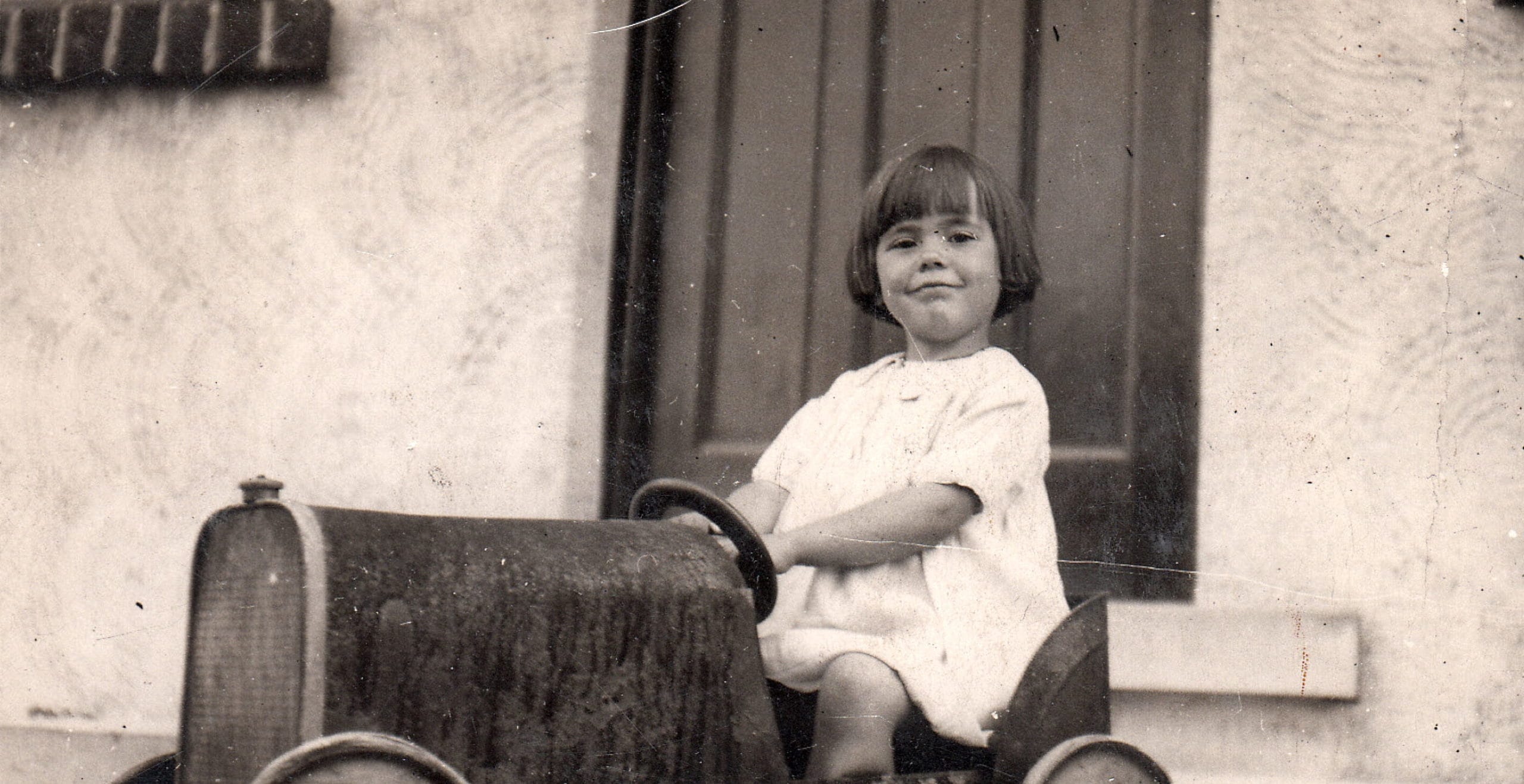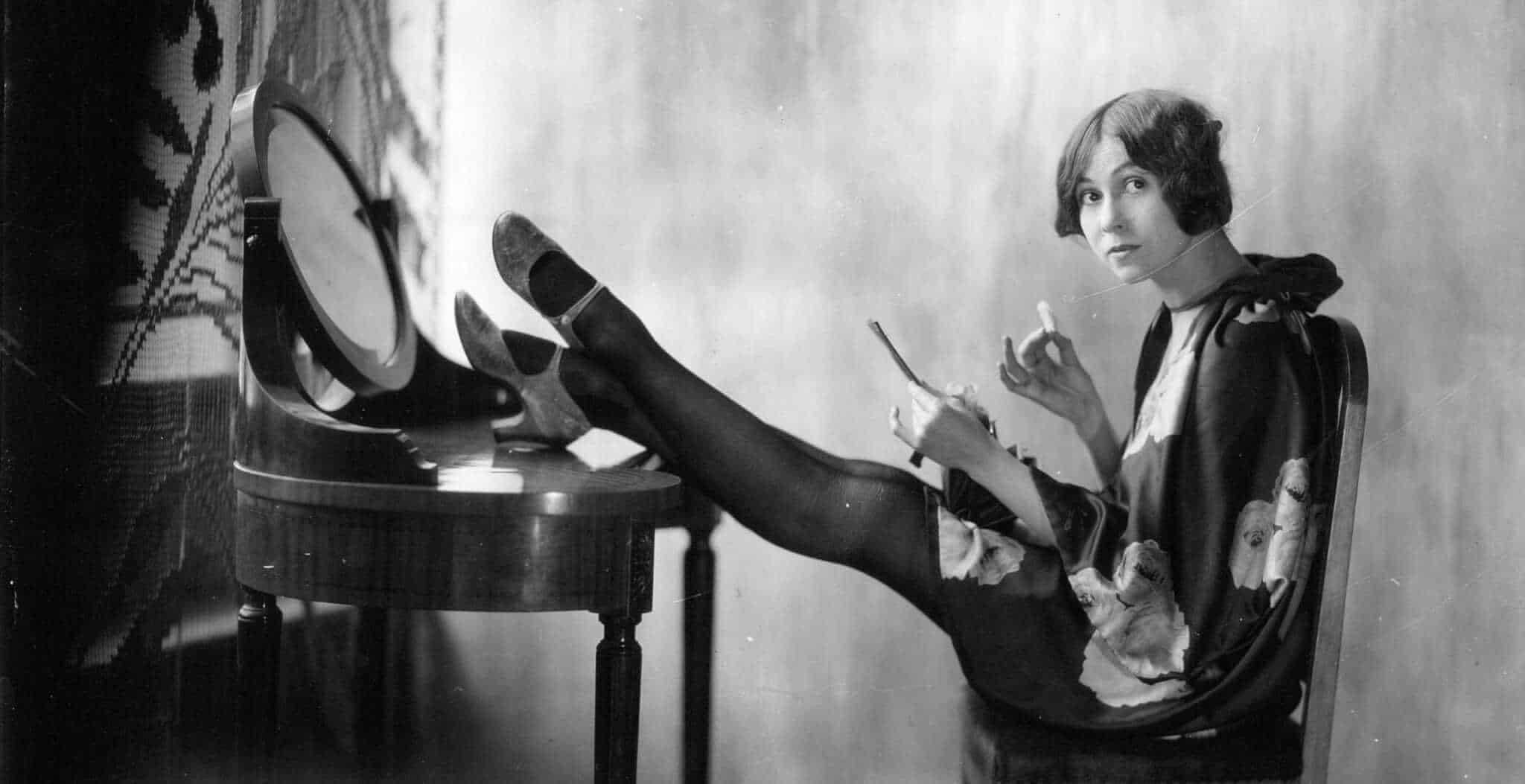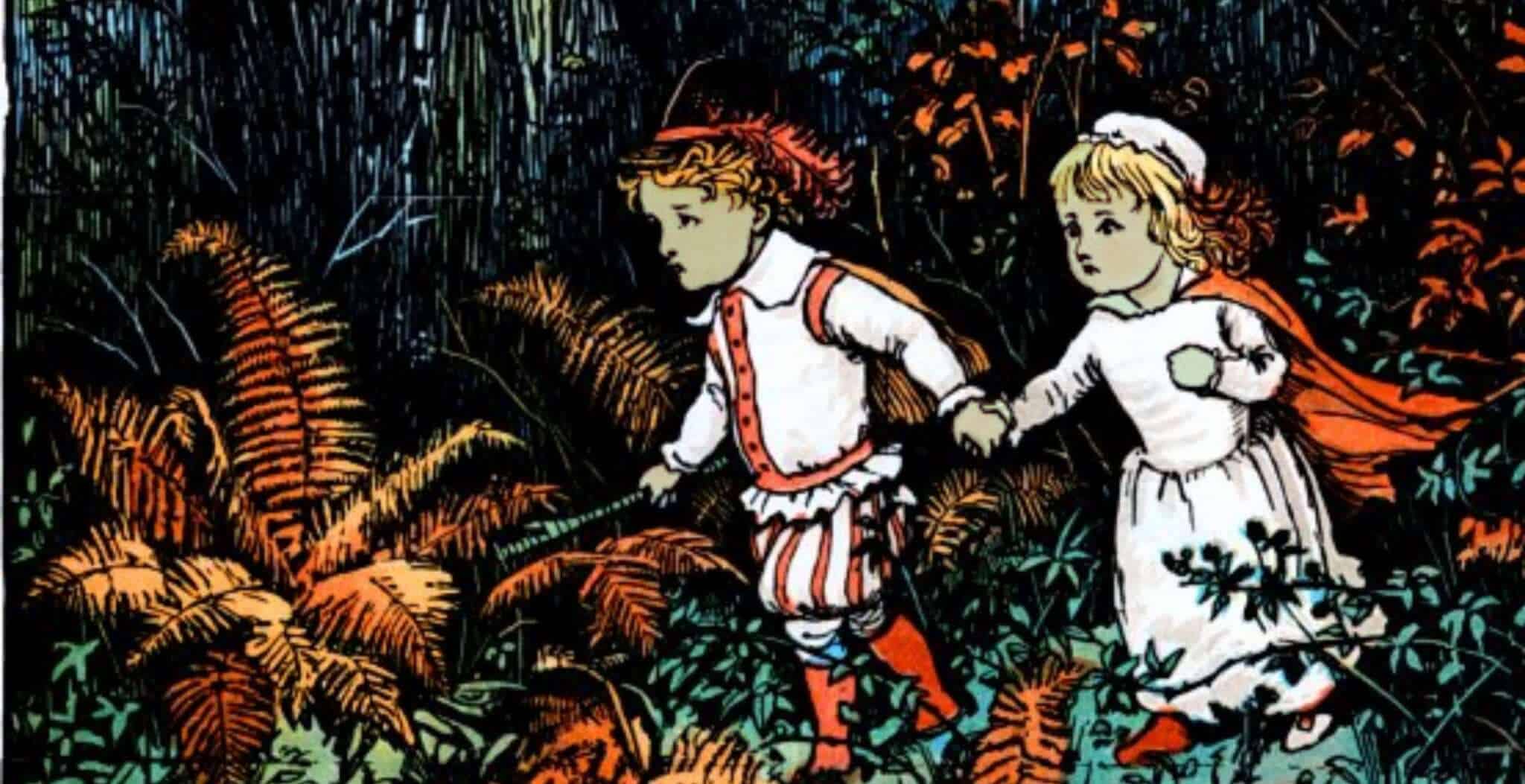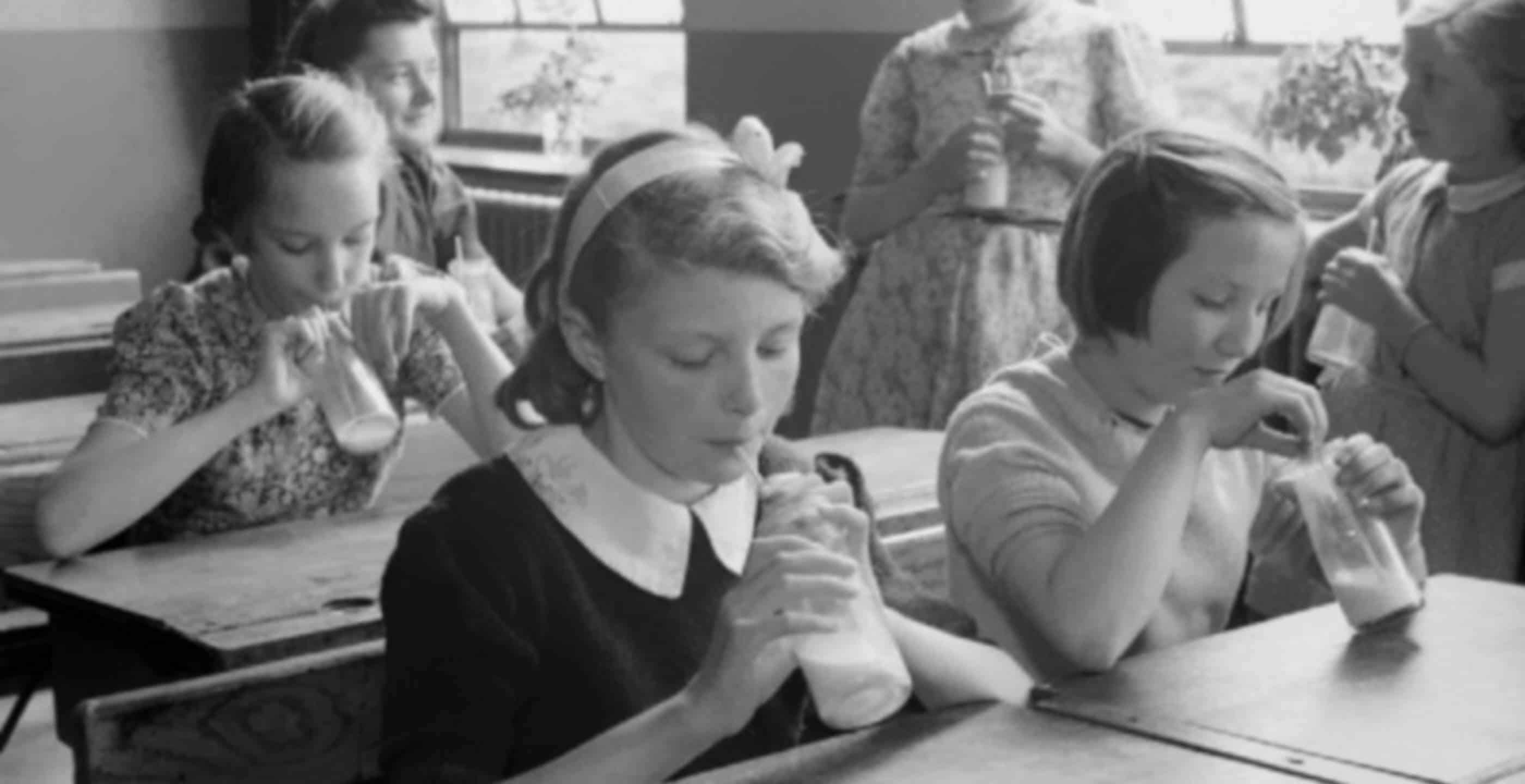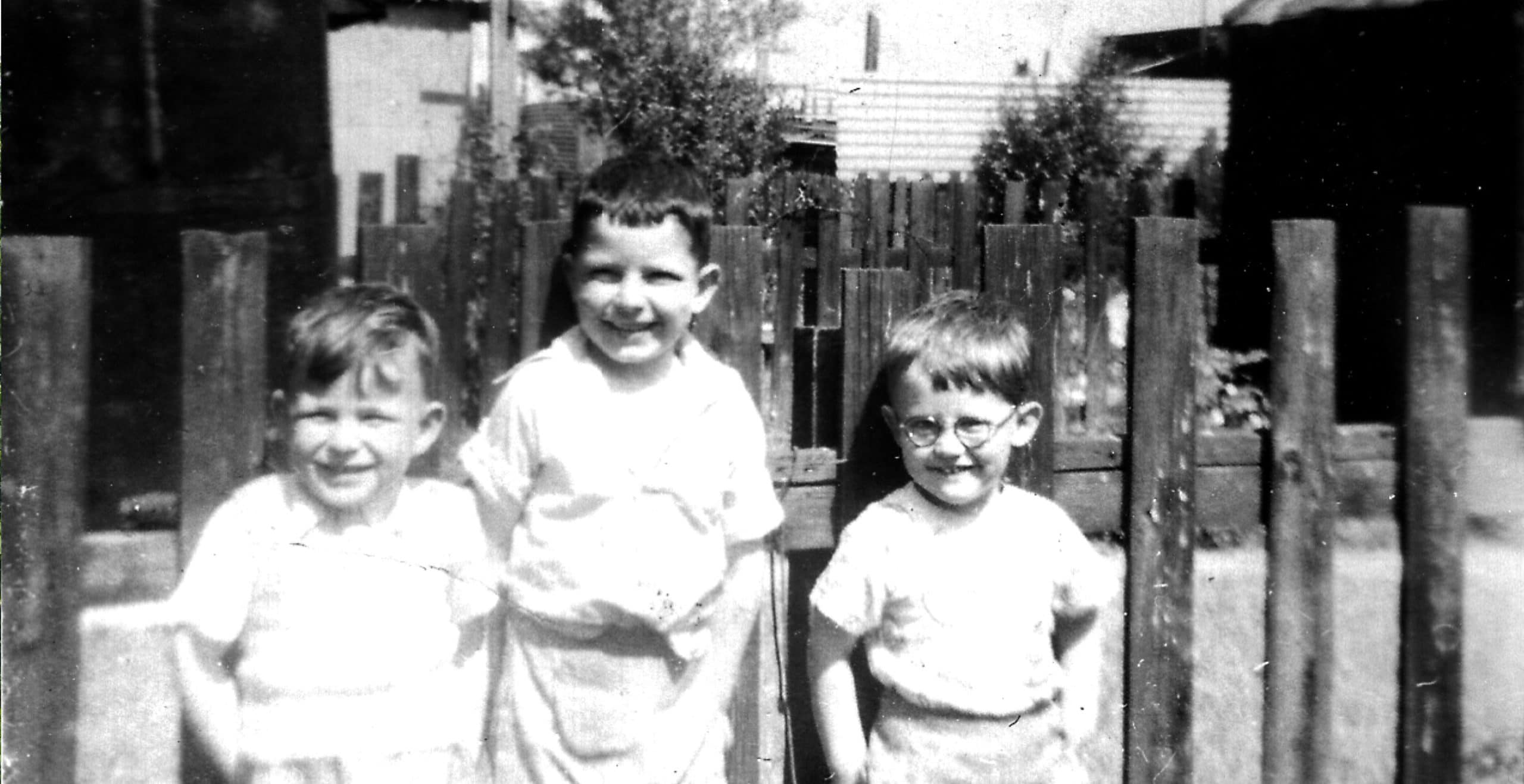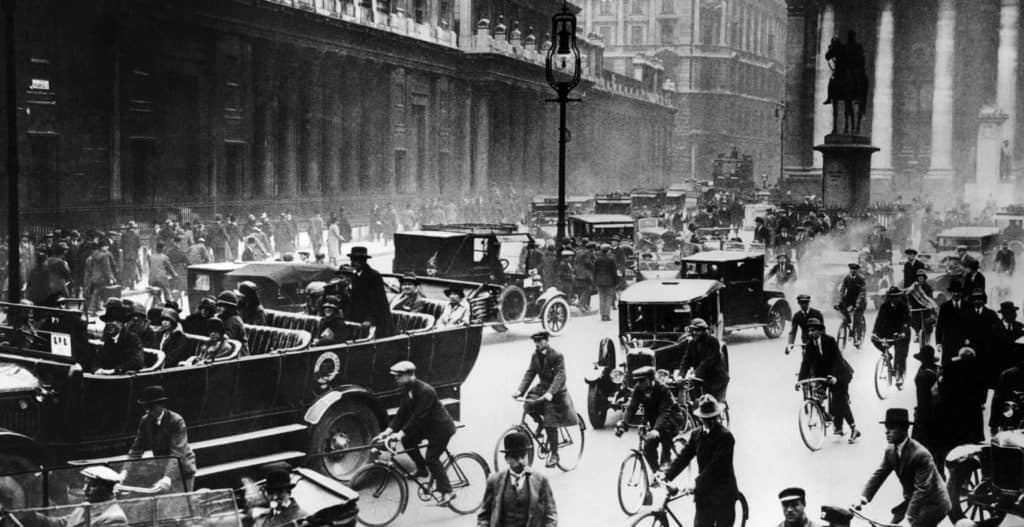What was it like to be a child in the 1920s and 1930s? What was it like to go to school and what games did children play in the inter-war period?
Life in the 1920s and 1930s, the era of the Great Depression, was difficult for many families. The affluence of the middle and upper classes was in stark contrast to the abject poverty experienced by families dealing with unemployment, slum housing and deprivation.
However schooling was compulsory for all children, from the age of 5 until the age of 14, when most children left school to enter the world of work, or to stay at home and help look after younger siblings. Out of school hours, many children helped with household chores, ran errands and looked after the younger ones in the family as families tended to be much larger in the 1920s. Fee-paying pupils or those at grammar school had the option of staying on at school until the age of 18. The school day began at 9am and finished at 4pm.
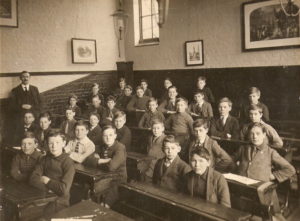 Classroom, 1920s
Classroom, 1920s
Many smaller schools did not have the facilities to offer school dinners in the 1920s and 1930s, so in the winter children would bring in a large potato to school, with their initials carved into the skin, to be baked for them in the school coal-oven. In summer pupils would bring sandwiches. Children who lived nearby would often go home for lunch. Some school boards offered free school meals to children from poorer families but these were not available everywhere.
Teaching was by rote: ‘chalk and talk’. There was an emphasis on the three R’s – reading, writing and (a)rithmetic – but there was also nature study, singing and weekly country dancing lessons. Sewing, knitting, woodwork and cookery lessons were taught to older pupils as well as a Personal Hygiene class once a week. In smaller country schools, it was not unusual for pupils to begin to learn to write using trays of sand and a stick, later graduating to a chalk board before having access to more expensive pencils and paper.
Discipline in school was strict. Anyone deemed to have misbehaved could expect to be given 100 lines to write out (“I must not…”), or if the misdemeanour was more serious, they could expect the cane or the ruler on the hand. Quite often when the chastised child went home, the parents would add to the punishment with a clip around the ear for good measure!
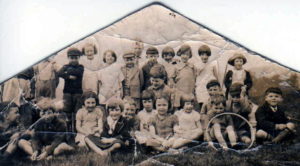 School Outing, c. 1935
School Outing, c. 1935
Toys and games were very simple for those growing up in the 1920s and 1930s. Most children played out on the streets as there were few cars around. Whip and top was very popular – although a little awkward to play if your street was cobbled! Tops were often made from wood, but carrot tops and turnip tops worked just as well. Hopscotch was fun, as well as skipping; Double Dutch was a particular favourite although it required long ropes. In summer, cricket was the street game of choice and of course, football was played all year round. In autumn it would be conkers.
At weekends and during school holidays, often children would go out to play after breakfast and not return until supper time. To our modern eyes, this seems very unsafe as children were not supervised and quite often their parents had little idea where they were. Most children however escaped harm, apart from a few bumps, bruises and grazed knees!
Comics were popular and published on a weekly basis. “Chicks Own” was geared towards young girls who would graduate on to “Tiny Tots” and finally to “School Friend”. “School Friend” was based on the adventures of pupils in a girls’ boarding school called Cliff House, and featured such characters as Barbara Redfern, Mabel Lyon, Jemima Carstairs – who wore a monocle and had an Eton crop – and Leila Carroll, who was an American: her favourite phrases were “Gee whiz” and “Whoopee”! Another pupil at Cliff House was Bessie Bunter, sister of Billy Bunter who appeared in the popular boys’ comic, “The Magnet”.
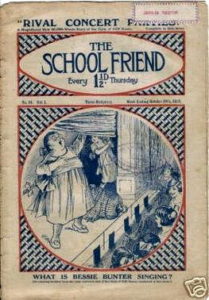 ‘The School Friend’ comic for girls
‘The School Friend’ comic for girls
Other boys’ comics included “The Boy’s Own Paper”, a mix of adventure stories, sport, puzzles and games. There was also “The Champion”, starring such characters as Rockfist Rogan (a RAF Pilot and boxer) and Colwyn Dane (a detective). Other popular comics included “The Wizard” and “Hotspur”. “The Beano” and “The Dandy” were first published in the late 1930s.
Sweets were cheap enough to be bought with pocket money. Sally Cook was born in 1922 and grew up in Leeds, Yorkshire:
“I had a halfpenny to spend each day which was nearly always squandered on a chocolate caramel bar. The sweet shop on the corner opposite my primary school had the most glorious selection of sweets you can imagine: Black Jacks, Fruit Salads, liquorice sticks, lemonade crystals, telephone wires, everlasting strips, acid drops, gob stoppers, aniseed balls and some sticky sweets that could be bought for halfpenny an ounce. I had 3d a week pocket money at the time.”
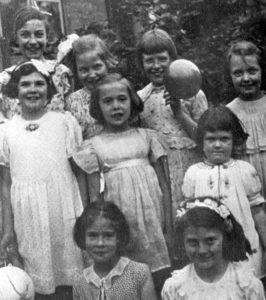 Birthday party, mid 1930s
Birthday party, mid 1930s
Other childhood pastimes included listening to the wireless, board games such as Ludo and Snakes and Ladders, playing with toy trains (Hornby), toy aeroplanes, dolls and dolls houses. Boys and girls could also join the Cubs, Brownies, Boy or Girl Scouts. Trips to the cinema were very popular.
However childhood was not all fun and games. In the 1920s and 1930s children had to contend with not only all the usual childhood diseases such as mumps and whooping cough, but also diphtheria and scarlet fever. Children with diphtheria or scarlet fever were sent to isolation hospitals – fever hospitals – often for months at a time. Polio, rickets and TB were also prevalent, especially amongst the poor, and often led to physical disability. It was a common sight to see children who had had polio in calipers right up until the 1960s.
The advent of war in 1939 led to thousands of children being evacuated from Britain’s cities and towns into the countryside. Childhood for many was changed forever.
Published 2nd March 2020
